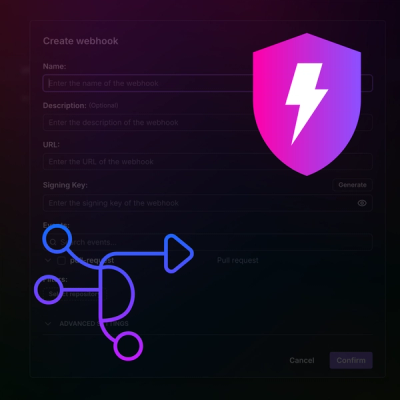
Product
Introducing GitHub Actions Scanning Support
Detect malware, unsafe data flows, and license issues in GitHub Actions with Socket’s new workflow scanning support.
@sentry/ember
Advanced tools
This package is an Ember addon that wraps @sentry/browser, with added functionality related to Ember. All methods
available in @sentry/browser can be imported from @sentry/ember.
As with other Ember addons, run: ember install @sentry/ember
Then add the following to your <your-app>/app.js
import * as Sentry from "@sentry/ember";
Sentry.init({
dsn: '__DSN__' // replace __DSN__ with your DSN,
// Set tracesSampleRate to 1.0 to capture 100%
// of transactions for performance monitoring.
// We recommend adjusting this value in production,
tracesSampleRate: 1.0,
});
To use this SDK, call Sentry.init before the application is initialized, in app.js. This will allow Sentry to
capture information while your app is starting. Any additional SDK settings can be modified via the usual config in
environment.js for you, see the Additional Configuration section for more details.
import Application from '@ember/application';
import Resolver from 'ember-resolver';
import loadInitializers from 'ember-load-initializers';
import config from './config/environment';
import * as Sentry from "@sentry/ember";
Sentry.init({
dsn: '__DSN__' // replace __DSN__ with your DSN,
// Set tracesSampleRate to 1.0 to capture 100%
// of transactions for performance monitoring.
// We recommend adjusting this value in production,
tracesSampleRate: 1.0,
});
export default class App extends Application {
modulePrefix = config.modulePrefix;
podModulePrefix = config.podModulePrefix;
Resolver = Resolver;
}
Aside from configuration passed from this addon into @sentry/browser via the sentry property, there is also the
following Ember specific configuration:
ENV['@sentry/ember'] = {
// Will silence Ember.onError warning without the need of using Ember debugging tools.
ignoreEmberOnErrorWarning: false,
// Will disable automatic instrumentation of performance.
// Manual instrumentation will still be sent.
disablePerformance: true,
// All runloop queue durations will be added as spans.
minimumRunloopQueueDuration: 0,
// Will disable automatic instrumentation for components.
disableInstrumentComponents: true,
// All (non-glimmer) component render durations will be added as spans.
minimumComponentRenderDuration: 0,
// All component definitions will be added as spans.
enableComponentDefinition: true,
};
@sentry/ember captures performance by default, if you would like to disable the automatic performance instrumentation,
you can add the following to your config/environment.js:
ENV['@sentry/ember'] = {
disablePerformance: true, // Will disable automatic instrumentation of performance. Manual instrumentation will still be sent.
};
If you would like to capture beforeModel, model, afterModel and setupController times for one of your routes,
you can import instrumentRoutePerformance and wrap your route with it.
import Route from '@ember/routing/route';
import { instrumentRoutePerformance } from '@sentry/ember';
class MyRoute extends Route {
model() {
//...
}
}
export default instrumentRoutePerformance(MyRoute);
The runloop queue durations are instrumented by default, as long as they are longer than a threshold (by default 5ms). This helps (via the render queue) capturing the entire render in case component render times aren't fully instrumented, such as when using glimmer components.
If you would like to change the runloop queue threshold, add the following to your config:
ENV['@sentry/ember'] = {
minimumRunloopQueueDuration: 0, // All runloop queue durations will be added as spans.
};
Non-glimmer component render times will automatically get captured.
If you would like to disable component render being instrumented, add the following to your config:
ENV['@sentry/ember'] = {
disableInstrumentComponents: true, // Will disable automatic instrumentation for components.
};
Additionally, components whose render time is below a threshold (by default 2ms) will not be included as spans. If you would like to change this threshold, add the following to your config:
ENV['@sentry/ember'] = {
minimumComponentRenderDuration: 0, // All (non-glimmer) component render durations will be added as spans.
};
Currently glimmer component render durations can only be captured indirectly via the runloop instrumentation. You can optionally enable a setting to show component definitions (which will indicate which components are being rendered) be adding the following to your config:
ENV['@sentry/ember'] = {
enableComponentDefinition: true, // All component definitions will be added as spans.
};
Previously we've recommended using the Ember integration from @sentry/integrations but moving forward we will be using
this Ember addon to offer more Ember-specific error and performancing monitoring.
For this package itself, you can find example instrumentation in the dummy application, which is also used for
testing. To test with the dummy application, you must pass the dsn as an environment variable.
SENTRY_DSN=__DSN__ ember serve
FAQs
Official Sentry SDK for Ember.js
The npm package @sentry/ember receives a total of 16,859 weekly downloads. As such, @sentry/ember popularity was classified as popular.
We found that @sentry/ember demonstrated a healthy version release cadence and project activity because the last version was released less than a year ago. It has 10 open source maintainers collaborating on the project.
Did you know?

Socket for GitHub automatically highlights issues in each pull request and monitors the health of all your open source dependencies. Discover the contents of your packages and block harmful activity before you install or update your dependencies.

Product
Detect malware, unsafe data flows, and license issues in GitHub Actions with Socket’s new workflow scanning support.

Product
Add real-time Socket webhook events to your workflows to automatically receive pull request scan results and security alerts in real time.

Research
The Socket Threat Research Team uncovered malicious NuGet packages typosquatting the popular Nethereum project to steal wallet keys.